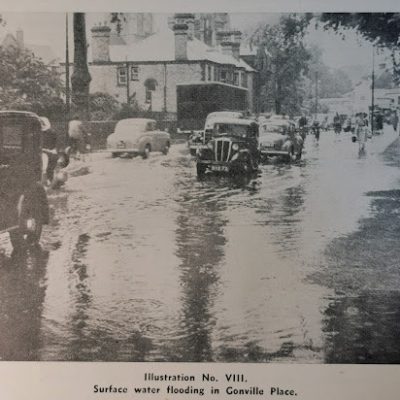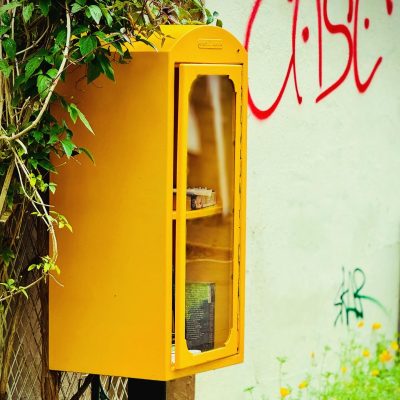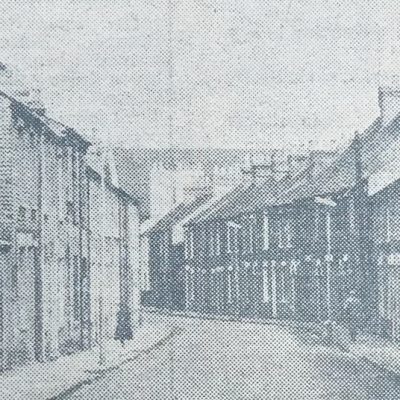Search by topic
- archaeology
- architecture
- bricklayer
- Building of Local Interest
- carpenter
- church
- crime
- dressmaker
- fire
- Great Eastern Railway
- listed building
- medieval
- oral history
- Public House
- Rattee & Kett
- Religious House
- Roman
- scholar
- school
- Then and Now
- tudor
- women
- work
- world war one
- world war two
Search by text
139 Gwydir Street
History of 139 Gwydir Street
1891
James Crompton, head, married, 55, Primitive Methodist Minister, b Lancs
Annie D, daughter, 26, school mistress, b Lancs
John, 24, son, 24, school master, b Lancs
Mary A, daughter, 22, assistant schoolmistress, b Isle of Man
Henrietta J Beale, 17, servant, b Dorset
1898 CIP 25.3.1898: Cleaning a Tricycle – John P Harper of 139 Gwydir Street, a plumber, was on Monday, cleaning a tricycle when he got his fingers jammed in the cog-wheels. On arrival at Addenbrookes Hospital it was found necessary to amputate one of his fingers.
1901
Francis Hayward, railway goods agent
Mary
Alice, 17, school teacher, b London
Francis, 15, railway clerk, b London
Helen
Dora
Hilda
Winifred
Daisy Peckham, servant, 16, b Cambridge
CIP 1.3.1901: SHOCKING FATALITY AT CAMBRIDGE STATION. A March Youth Killed. A shocking accident occurred on the Great Eastern Railway, just outside the Cambridge Station, on Wednesday morning, when John Robinson, aged 16 years employed by the Great Eastern Railway Company as a number taker, was knocked down by a train and killed. The deceased was the son of John Robinson, a labourer of George Street, March, but had been lodging at 19 Thoday-street, Cambridge. A certain amount of mystery is connected with the accident, as it seems that it was witnessed by no one.
THE INQUEST was held bv Mr. Coroner H.S. French at the Cambridge Workhouse yesterday evening. Mr. Joseph Pryor was appointed foreman of the jury. Inspector G Stevens watched the proceedings ou behalf of the Great Eastern Railway company, and Mr. Chief Constable C.E. Holland represented the Borough Police.
The father identified the body of the deceased as that of his son, who he said would have been 17 years of age next July.
Francis Hayward, of Gwydir street, Cambridge, goods agent for the Great Eastern Railway, deposed that the deceased duties as number taker consisted of taking the numbers of trucks side of the railroad, almost opposite the north which he had in his possession, and afterwards entering them in a ledger. To do the former it was necessary to work on the line. He had to work 12 hours, either day or night. It was customary to employ young lads on night work. The deceased had a box on the other side of the railroad, almost opposite the north end signal box, near Mill-road Bridge. Deceased would have no duty to do in the signal box. At the time the accident occurred the deceased’s duties should not have taken him to that part of the yard where the accident occurred at all. The number-takers were all provided with hand lamps but the deceased’s was in his hut at the time of the occurrence. The last entry made by the deceased in his ledger was of the 4.50 train going away from Cambridge. That was a proof that after booking that train out in his pocket-book he went to his hut and entered it in the ledger. Deceased was a very
STEADY YOUNG MAN,
and had been in the services of the Company for eight months. By the Chief Constable: Witness had no idea whatever what the deceased could have been doing on that part of the line. He had no business to cross the rails at all. There would be some eight or nine trains pass during the time he was on duty.
The Chief Constable: We presume that he was alive and in the hut after five o’ck. Would he be expecting an up-train; -Yes, there was one at 5.20.
Would he go across to the signal-box to ask how it was running? -He might have done.
Frederick Ing, wheel-tapper in the employ of the Midland Railway Company, living at 96, Argyle-street, said he was on duty from six o’clock on Tuesday morning until six next morning and was with the deceased three parts of the time. Witness last saw him about ten minutes past five on Wednesday morning. He entered the last train up – the 4.55 up train from Cambridge – in his hut, and left witness there. He saw no more of him until he saw him dead.
By the Jury: it was not unusual for the deceased to go out of the hut without his lamp. The 5-10 train was late that morning. Witness had never crossed the line to the signal box to inquire how a train was running.
Fred Norman, of Great Eastern Street, a leaner, in the employ of the Great eastern railway Company, said he did not know Robinson. In co sequence of what two men told him about 5.30 on Wednesday morning, he proceeded towards the North end signal box, almost opposite which he found the body of the deceased. It was on the down main line, and lay across the rails, the face being turned upwards. The head was in the four foot way, the other part of the body in the six toot. The body was completely
CRUSHED IN HALVES
The deceased’s face was inclined towards Devonshire Road. Witness did not see his hat there.
Joseph John Beard a signalman of 58 Ainsworth Street, said deceased had never come across to witness while he was on duty.
Mr Hayward, in consequence of the Coroner’s remarks as to the Company employing lads too young, pointed out that when the deceased entered the service of the Company in June 1900 he stated that he would be 17 the following September.
The Jury found that the deceased was accidentally killed, and that there was no blame attaching to anyone. They expressed their sympathy with Mr. Robinson in his sad bereavement.
CIP 8.3.1901: Accidents: On Monday a youth named Francis Hayward of 139 Gwydir Street employed as a clerk at the Great Eastern railway station was scaling a slanting desk to open a window in his office when he slipped. In trying to save himself he thrust both arms through the window and cut them severely. He was taken to Addenbrookes Hospital where he is making rapid progress.
1911
Francis Hayward, 52, goods agent, b Middlesex
Mary, 50, b Surrey
Helen, 24, b London
Dora, 22, b London
Hilda, 16, b London
Winifred, 13, b Cambridge
1913
Francis C Hayward GER goods agent
1937
William Wosencroft
1962
Alfred Isaacson
1970
Rt A Dei Rossi
Contribute
Do you have any information about the people or places in this article? If so, then please let us know using the Contact page or by emailing capturingcambridge@
License
This work is licensed under CC BY-NC-SA 4.0











